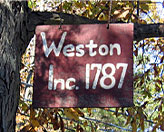

The Future Of AIDS Prevention in Connecticut
|
Prevention Plan for Hispanic Community |
|
|
Although the intervention program targeting the Hispanic population of Bridgeport should not be exceptionally different from that aimed at the African American community, there are a few key variations that distinctly separate the two plans, the first of which is the specific material covered in each session. Like the African American program, the intervention strategy for the Hispanic community will include three 90-120 minute sessions aimed at educating the attendees about risky behavior and how to avoid it. However, in the Hispanic plan the sessions will be adapted to fit the Latino culture and will, specifically, be sensitive of the machismo traditions inherent in the community.
For example, the first session will include the identification of Hispanic health concerns and community resources, focusing on alerting the participants to the service opportunities available to them. The second session will split the group into male and female sections, much like the African American version, however instead of focusing on risky relationships (a potentially sensitive subject for machismo-oriented men and women), the facilitators will concentrate on risk reduction, disease information, negotiation skills, and misconceptions about contraception. The last two of these are particularly important for, as the authors of the WINGS analysis point out, many women struggle with the decision to ask their partner to wear a condom (6) and even attempt to substitute ineffective contraception methods. As “Prevention Myths and HIV Risk Reduction by Active Drug Users” proves, nearly 50% of polled women thought washing genitals with soap after sex would prevent the contraction of HIV and nearly 32% thought having sex with only healthy-appearing people would prevent infection (14). For these women, negotiation skills would be an invaluable resource.
Finally, the third session would cover many of the same issues of the corresponding African American session, including drug abuse, harm reduction, and information about the NEP van. The only difference would be that this session, along with the previous two, would all be taught in Spanish and held on Monday nights in the Hispanic Cultural Center of Bridgeport, as opposed to the Golden Hill Methodist Church.
|
|
|
Black Rock Arts Center in Bridgeport, Connecticut (30)
|
Throughout the intervention sessions, this program plans on educating at least 200 Hispanic men and women. Not only would the cultural center be able to hold such large numbers, but it would prove an ideal place for both advertising and the creation of a community feeling. Like in the previous two plans, the facilitators of the Hispanic program would advertise in emergency rooms and waiting rooms of Norwalk Hospital and Bridgeport Hospital, NA meetings, drug rehab clinics, churches, schools, and Hispanic cultural centers. However, holding the sessions in a location already known and frequented by the Hispanic population might increase the likelihood of continued attendance on the part of the Hispanic community.
Finally, the decision to hold the meeting sessions in the Cultural Center will help to establish the community feeling many members of the Hispanic population crave. According to the authors of “Immigration and HIV/AIDS in the New York Metropolitan Area,” many Hispanic immigrants experience a “loss of self-esteem, feelings of failure, and increased levels of frustrations and disappointment” (19) upon moving to America. Furthermore, findings have suggested that “social support can be an important protective factor in reducing HIV-related drug injection risk among injection users (IDUs)” (15). It is therefore crucial that Public Health officials in Bridgeport institute a community-oriented program designed to alert participants to the present of cultural resources and provide a sense of community within the meeting sessions. Although the very presence of such large numbers of participants with similar backgrounds will help to create the necessary community, comment cards and feedback opportunities about session-leaders will also add to the creation of feeling of safety, security, and inclusion (5). It is through the implementation of an educational intervention program focused on culturally appropriate matters (taught in Spanish), that the Public Health Department will be able to alleviate service barriers (such as the loss of community experienced by many Hispanics) and introduce risk reduction behavioral practices.
|